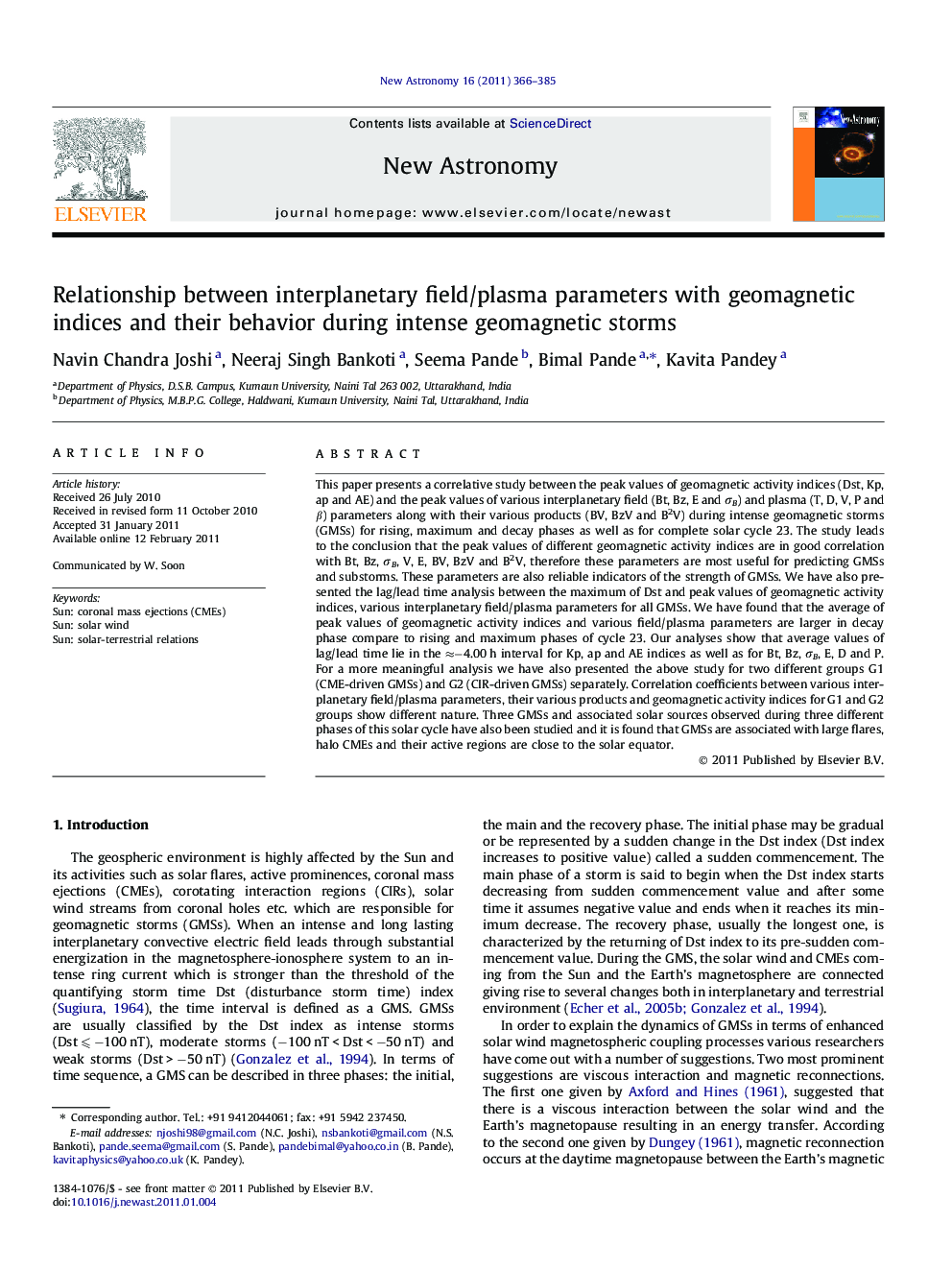| Article ID | Journal | Published Year | Pages | File Type |
|---|---|---|---|---|
| 1779258 | New Astronomy | 2011 | 20 Pages |
Abstract
This paper presents a correlative study between the peak values of geomagnetic activity indices (Dst, Kp, ap and AE) and the peak values of various interplanetary field (Bt, Bz, E and ÏB) and plasma (T, D, V, P and β) parameters along with their various products (BV, BzV and B2V) during intense geomagnetic storms (GMSs) for rising, maximum and decay phases as well as for complete solar cycle 23. The study leads to the conclusion that the peak values of different geomagnetic activity indices are in good correlation with Bt, Bz, ÏB, V, E, BV, BzV and B2V, therefore these parameters are most useful for predicting GMSs and substorms. These parameters are also reliable indicators of the strength of GMSs. We have also presented the lag/lead time analysis between the maximum of Dst and peak values of geomagnetic activity indices, various interplanetary field/plasma parameters for all GMSs. We have found that the average of peak values of geomagnetic activity indices and various field/plasma parameters are larger in decay phase compare to rising and maximum phases of cycle 23. Our analyses show that average values of lag/lead time lie in the ââ4.00 h interval for Kp, ap and AE indices as well as for Bt, Bz, ÏB, E, D and P. For a more meaningful analysis we have also presented the above study for two different groups G1 (CME-driven GMSs) and G2 (CIR-driven GMSs) separately. Correlation coefficients between various interplanetary field/plasma parameters, their various products and geomagnetic activity indices for G1 and G2 groups show different nature. Three GMSs and associated solar sources observed during three different phases of this solar cycle have also been studied and it is found that GMSs are associated with large flares, halo CMEs and their active regions are close to the solar equator.
Keywords
Related Topics
Physical Sciences and Engineering
Physics and Astronomy
Astronomy and Astrophysics
Authors
Navin Chandra Joshi, Neeraj Singh Bankoti, Seema Pande, Bimal Pande, Kavita Pandey,
